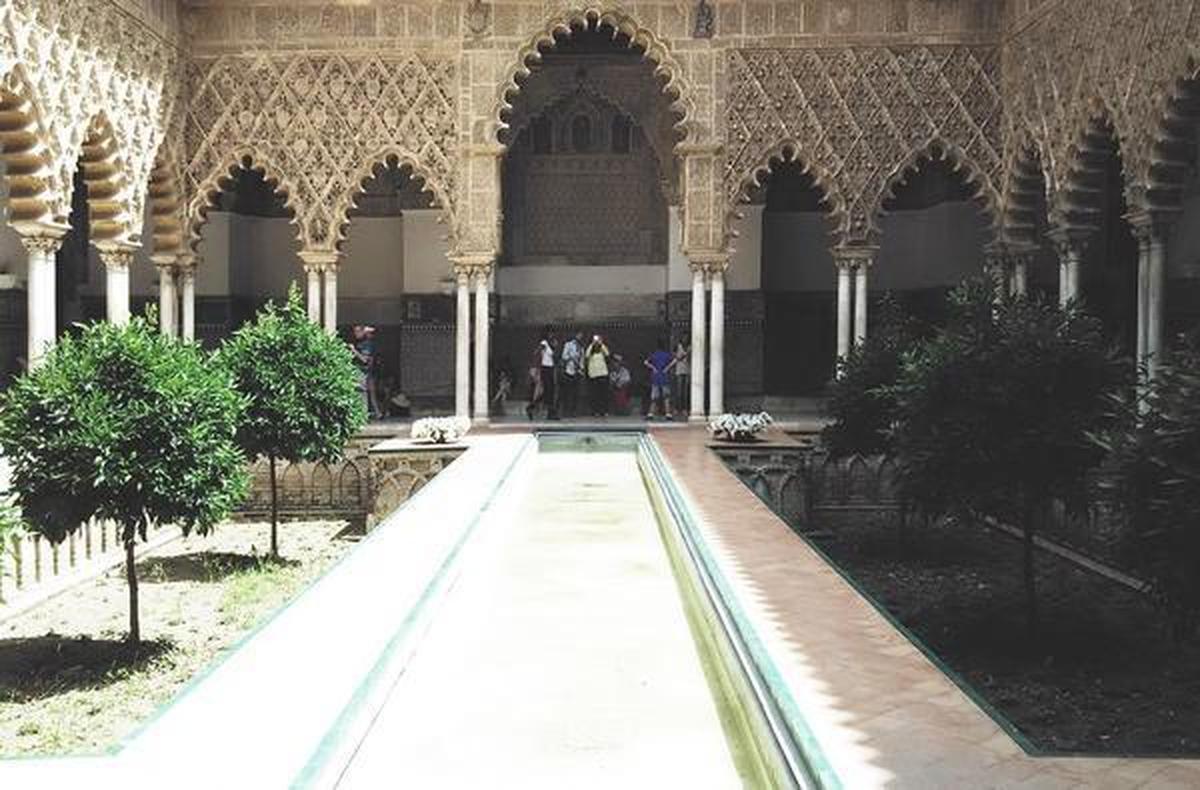Originalmente conocido como el Patio del Rey, su nombre actual aparece en el s. XVI. A través de él se conectan las diferentes piezas del palacio: el salón de honor, el salón de los embajadores al este, el cuarto del rey al norte y la capilla palatina en el costado meridional. Inicialmente conformado por una sola planta, las reformas llevadas por Carlos I y Felipe II implicaron la agregación de un piso superior para localizar el palacio de invierno del emperador. Dicha superposición transformó al patio de las Doncellas en uno de los más bellos y característicos ejemplos del arte mudéjar, hibridando afortunadamente formas islámicas y cristianas. La configuración del pavimento de este patio se transformó recientemente, devolviéndole su apariencia original, similar a los jardines almohades en dos niveles de la Sevilla medieval. Actualmente se cultivan en ellos naranjos amargos y violetas.
